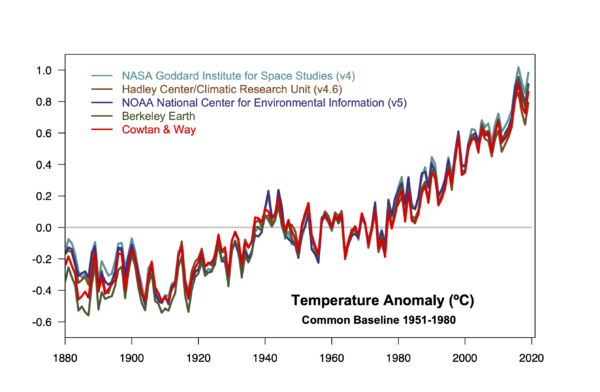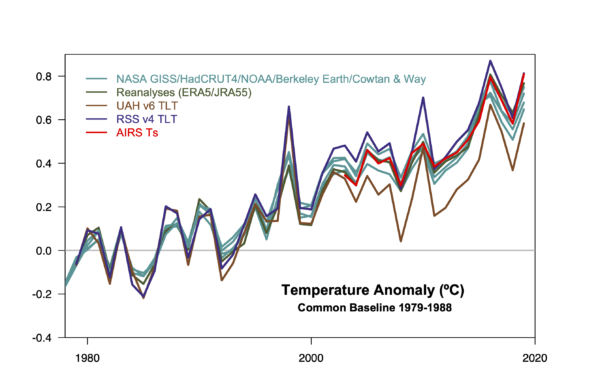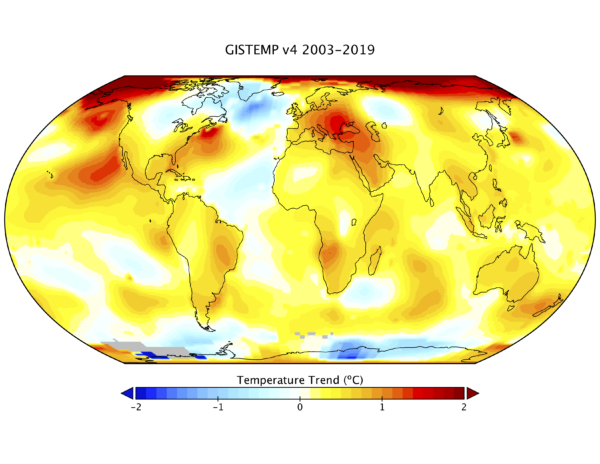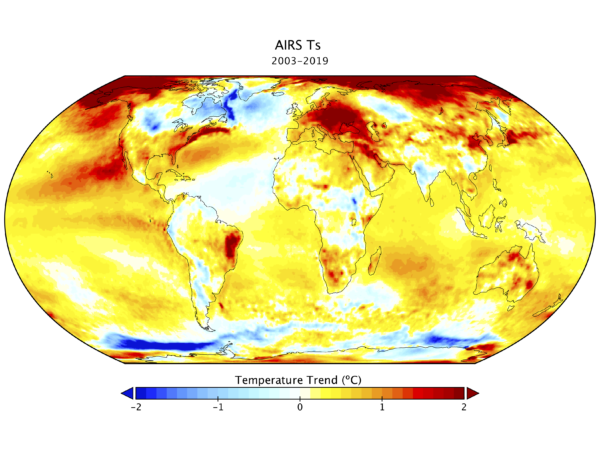The climate summaries for 2019 are all now out. None of this will be a surprise to anyone who’s been paying attention, but the results are stark.

- 2019 was the second warmest year (in analyses from GISTEMP, NOAA NCEI, ERA5, JRA55, Berkeley Earth and Cowtan & Way, RSS TLT), it was third warmest in the standard HadCRUT4 product and in the UAH TLT. It was the warmest year in the AIRS Ts product.
- For ocean heat content, it was the warmest year, though in terms of just the sea surface temperature (HadSST3), it was the third warmest.
- The top 5 years in all surface temperature series, are the last five years. [Update: this isn’t true for the MSU TLT data which have 2010 (RSS) and 1998 (UAH) still in the mix].
- The decade was the first with temperatures more than 1ºC above the late 19th C in almost all products.
This year there are two new additions to the discussion, notably the ERA5 Reanalyses product (1979-2019) which is independent of the surface weather stations, and the AIRS Ts product (2003-2019) which again, is totally independent of the surface data. Remarkably, they line up almost exactly. [Update: the ERA5 system assimilates the SYNOP reports from weather stations, which is not independent of the source data for the surface temperature products. However, the interpolation is based on the model physics and many other sources of observed data.]

The two MSU lowermost troposphere products are distinct from the surface record (showing notably more warming in the 1998, 2010 El Niño years – though it wasn’t as clear in 2016), but with similar trends. The biggest outlier is (as usual) the UAH record, indicating that the structural uncertainty in the MSU TLT trends remains significant.
One of the most interesting comparisons this year has been the coherence of the AIRS results which come from an IR sensor on board EOS Aqua and which has been producing surface temperature estimates from 2003 onwards. The rate and patterns of warming of this and GISTEMP for the overlap period are remarkably close, and where they differ, suggest potential issues in the weather station network.
The trends over that period in the global mean are very close (0.24ºC/dec vs. 0.25ºC/dec), with AIRS showing slightly more warming in the Arctic. Interestingly, AIRS 2019 slightly beats 2016 in their ranking.
I will be updating the model/observation comparisons over the next few days.

